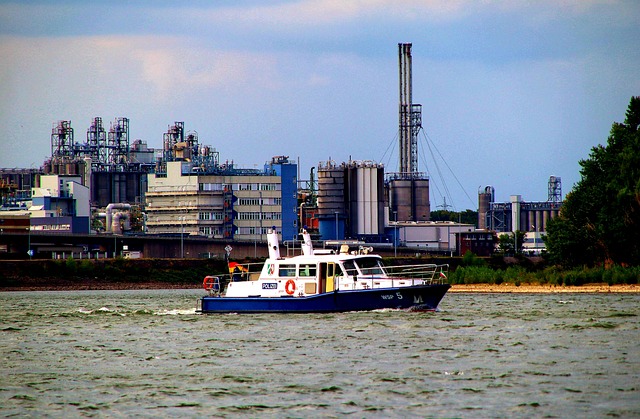In today's regulated environment, understanding and managing legal risks is key for businesses. To navigate Environmental Regulations Litigation, companies should grasp evolving laws, regional variations, and adopt proactive measures like risk assessments and eco-friendly operations. Effective strategies involve identifying key regulatory areas (e.g., pollution control), staying compliant with crucial laws (CERCLA, RCRA, TSCA), and strategic risk management through pre-litigation investigations and internal protocols. Through case studies, this guide explores successful techniques like loophole identification and proactive communication to defend against charges and prevent litigation.
In today’s complex legal landscape, understanding and managing litigation risks, especially in environmental law, is paramount for businesses. This comprehensive guide explores how to navigate environmental regulations litigation effectively. We delve into identifying potential risks, key regulatory areas to watch, and robust strategies for mitigation. Through real-world case studies, we illuminate successful navigation techniques, offering valuable insights for organizations seeking to minimize exposure and ensure compliance.
- Understanding Environmental Litigation Risks
- Key Regulatory Areas to Focus On
- Strategies for Effective Risk Mitigation
- Case Studies: Successful Navigation Techniques
Understanding Environmental Litigation Risks

In today’s complex legal landscape, understanding environmental litigation risks is paramount for businesses to navigate the challenges posed by stringent regulations. Environmental laws have evolved significantly over the years, reflecting a global push towards sustainability and accountability. As such, companies must be adept at managing potential liabilities arising from non-compliance or accidental environmental harm. This involves a deep comprehension of applicable rules and their regional variations, as well as proactive measures to prevent infractions. By adopting a strategic approach, organizations can ensure they meet regulatory standards while mitigating the risk of costly litigation.
Mastering How to Navigate Environmental Regulations Litigation requires an unprecedented track record of due diligence and adherence to best practices. A robust legal strategy should encompass comprehensive risk assessments, regular audits, and the implementation of eco-friendly operations where feasible. Moreover, a strong general criminal defense mechanism can serve as a shield against allegations of environmental crimes, ultimately helping companies avoid indictment for infractions that may have been unintentional or beyond their immediate control.
Key Regulatory Areas to Focus On

Navigating Environmental Regulations Litigation requires a keen understanding of key regulatory areas. The first step in managing litigation risk is to identify and prioritize these areas, which often include environmental laws governing pollution control, waste management, and hazard communication. Staying compliant with these regulations throughout all stages of the investigative and enforcement process is crucial for any respective business aiming to avoid indictment.
Focusing on areas like the Comprehensive Environmental Response, Compensation, and Liability Act (CERCLA), the Resource Conservation and Recovery Act (RCRA), and the Toxic Substances Control Act (TSCA) is essential. These laws cover a wide range of environmental issues, from cleaning up hazardous waste sites to regulating the manufacture and use of toxic substances. By thoroughly comprehending these regulations and ensuring strict adherence, businesses can significantly mitigate their litigation risk in environmental cases.
Strategies for Effective Risk Mitigation

Effective risk management in litigation involves a strategic approach to navigate complex legal landscapes, especially when dealing with environmental regulations. For both corporate and individual clients, understanding the unique risks associated with each case is key. By identifying potential issues early on, lawyers can devise tailored strategies to mitigate these risks successfully. This proactive approach is crucial for high-stakes cases across the country, where the consequences of missteps can be severe.
One strategy involves conducting thorough pre-litigation investigations and risk assessments. This includes reviewing relevant environmental laws, regulations, and potential liabilities. Additionally, developing robust internal protocols ensures that all legal teams are aligned with best practices. Such measures help in preventing costly errors and enhance the overall effectiveness of case management. Regular training sessions on environmental compliance and risk mitigation can also equip corporate legal departments to handle these matters efficiently, ensuring a stronger defense in any litigation.
Case Studies: Successful Navigation Techniques

Many successful case studies highlight effective navigation techniques when dealing with complex environmental regulations litigation. One prominent example involves a leading environmental law firm representing clients in a high-stakes dispute over a suspected toxic site. By meticulously reviewing relevant environmental regulations and industry standards, they identified a loophole that their clients’ actions inadvertently complied with. This strategic insight allowed them to argue for the dismissal of charges, achieving extraordinary results for their clients.
Another notable case shows how proactive communication between legal teams and regulatory bodies can prevent litigation altogether. A general criminal defense lawyer successfully negotiated on behalf of his clients by demonstrating a willingness to comply with stricter environmental regulations. Through this collaborative approach, they avoided costly lawsuits and established a precedent for future similar cases, showcasing effective navigation in the intricate landscape of environmental law.
Effective litigation risk management is crucial for navigating the complex landscape of environmental regulations. By understanding potential risks, focusing on key regulatory areas, and implementing robust mitigation strategies, organizations can successfully steer clear of costly legal battles. As evidenced by successful case studies, proactive approaches and a deep understanding of environmental laws are game changers in minimizing litigation exposure. Remember that, in today’s digital era, staying informed and compliant is more vital than ever to protect your organization’s soul and ensure sustainability for the future. Learn how to navigate these regulations promptly and revolutionise your risk management strategy.






